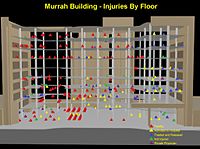
Photo from wikipedia
A diverse group of toxicants has been identified that cause injury to the lung including gases (eg, ozone, chlorine), particulates/aerosols (eg, diesel exhaust, fly ash, other combustion products, mustards, nanomaterials,… Click to show full abstract
A diverse group of toxicants has been identified that cause injury to the lung including gases (eg, ozone, chlorine), particulates/aerosols (eg, diesel exhaust, fly ash, other combustion products, mustards, nanomaterials, silica, asbestos), chemotherapeutics (eg, bleomycin), and radiation. The pathologic response to these toxicants depends on the dose and duration of exposure and their physical/chemical properties. A common response to pulmonary toxicant exposure is an accumulation of proinflammatory/cytotoxic M1 macrophages at sites of tissue injury, followed by the appearance of anti-inflammatory/wound repair M2 macrophages. It is thought that the outcome of the pathogenic responses to toxicants depends on the balance in the activity of these macrophage subpopulations. Overactivation of either M1 or M2 macrophages leads to injury and disease pathogenesis. Thus, the very same macrophage-derived mediators, released in controlled amounts to destroy injurious materials and pathogens (eg, reactive oxygen species, reactive nitrogen species, proteases, tumor necrosis factor α) and initiate wound repair (eg, transforming growth factor β, connective tissue growth factor, vascular endothelial growth factor), can exacerbate acute lung injury and/or induce chronic disease such as fibrosis, chronic obstructive pulmonary disease, and asthma, when released in excess. This review focuses on the role of macrophage subsets in acute lung injury and chronic fibrosis. Understanding how these pathologies develop following exposure to toxicants, and the contribution of resident and inflammatory macrophages to disease pathogenesis may lead to the development of novel approaches for treating lung diseases.
Journal Title: Toxicological Sciences
Year Published: 2019
Link to full text (if available)
Share on Social Media: Sign Up to like & get
recommendations!